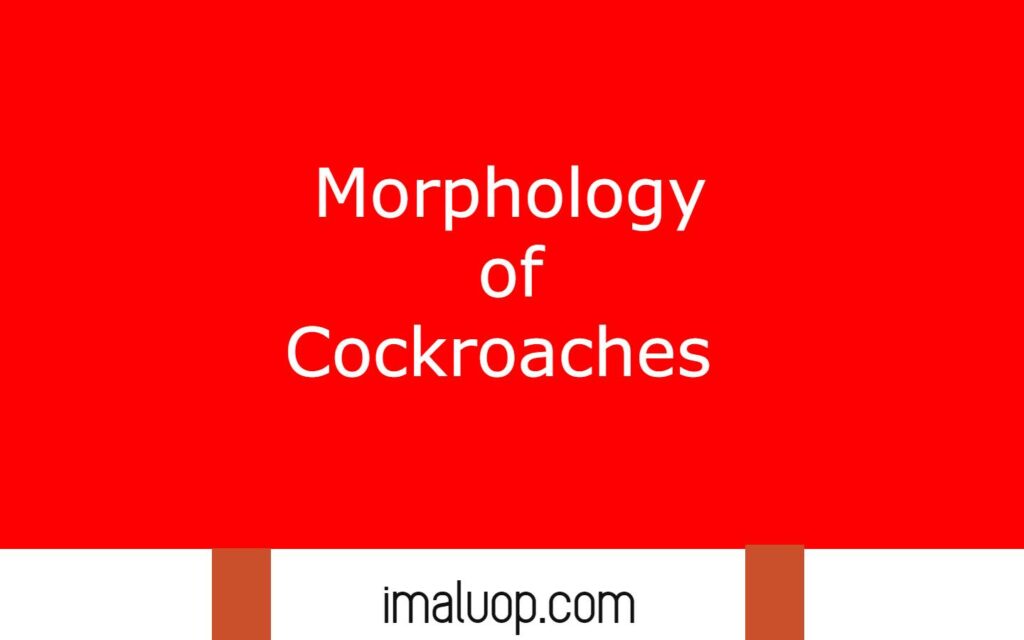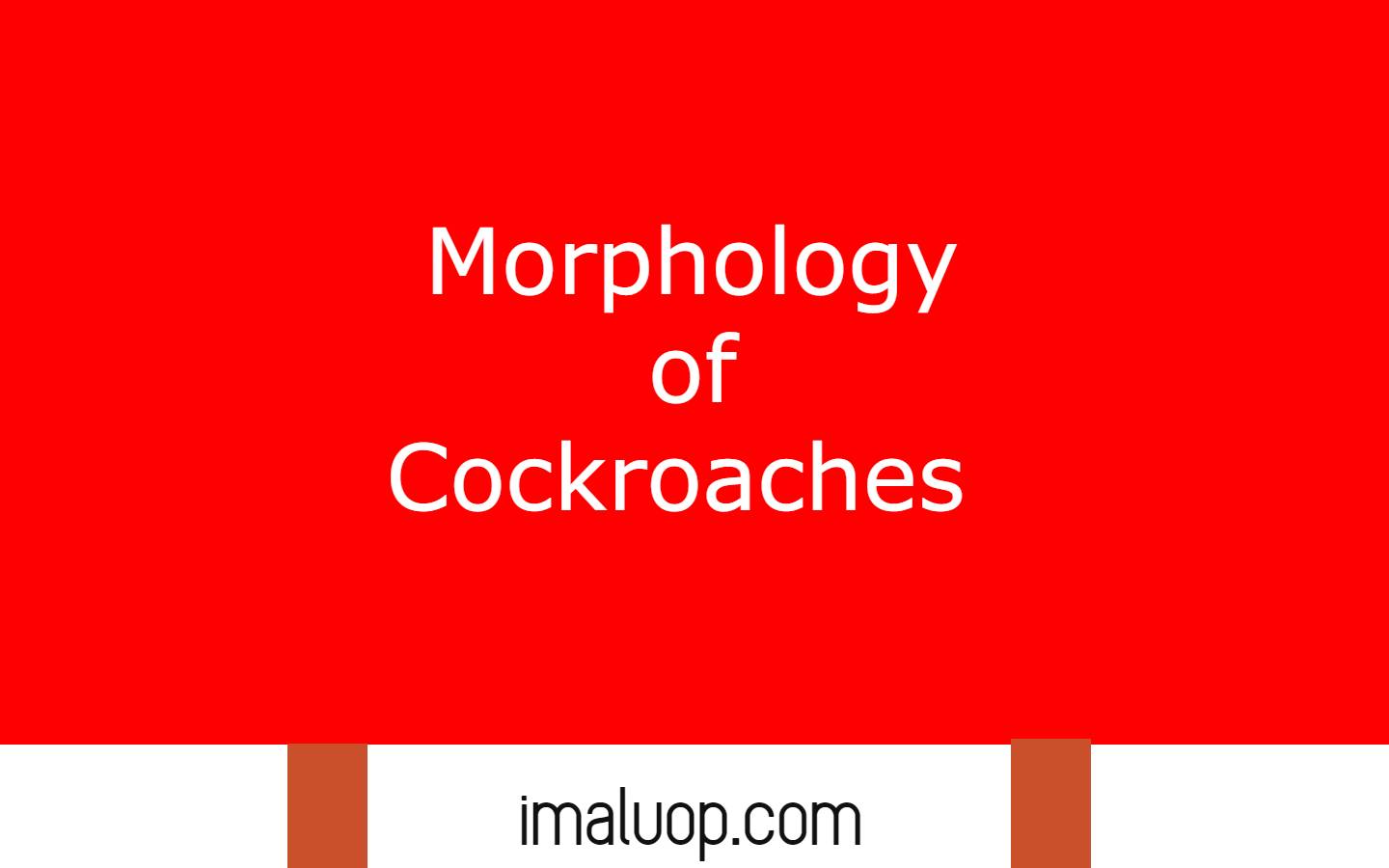Hi, today we are going to discuss a topic in structural organisation in animal morphology of cockroach. Like other arthropods, the body of a cockroach is segmented and elongated. Body colour of cockroach vary from dark brown to reddish brown and their body is covered by hard sclerite plates which have thick coat of wax to protect their body against water loss.
If you notice carefully you will find that their body has 10 segments on dorsal side they are tergum and on ventral side they are sternum and they are joined laterally with the help of thin soft arthrodial membrane.
Their body have three conspicuous part head, thorax, abdomen they have three pairs of jointed appendages and two pairs of wings for flying in short range.
Among the two pairs of wings the first pair of wings are attached with mesothorax which protects their actual wings so they are known as wing covers. Wing covers are also known as elytra or tegmina which is dark in colour, opaque and leathery.
Hind wings are their actual wings which are used for flying but they remain covered by elytra when they do not fly and these two wings are thin, transparent and membranous.
Table of Contents
Mouth Parts of Cockroach:
Mouths present on their head ventrally and surrounded by other mouthparts mandibles, labrum, labium, hypopharynx, maxillae which helps them to bite and chew their food properly.
Labrum:
It is a broad plate like flattened structure present on the dorsal side of head terminally which functions like an upper lips and it has a chemoreceptor epipharynx which is present on the inner side.
Mandibles:
On the lateral side mouth have triangular structure present beneath the labrum which have teeth like pointed structure denticles are known as mandibles.
First Maxillae:
Besides mandibles, the lateral side of the mouth has a special structure for cutting and chewing food and has an olfactory receptor for sense of smell.
Labium:
On the ventral side of their mouth they have a lower lip like structure which is actually fused second maxillae known as labium and they have tentacles and gustatory sensory setae.
Hypopharynx:
It is a cylindrical mouth part which is covered by labrum on dorsal side and covered by labium on ventral side present between the first Maxillae. Its open end has multiple sensory seate and the common salivary duct opens into its basal region.
Compound Eyes of Cockroach:
Like other insects, cockroaches also have compound eyes for their vision which is present on their head dorsally. Their compound eyes are a union of around 2000 small units which are known as ommatidia of hexagonal shape.
Cockroaches generally become active during night so they need enhanced night vision and compound eyes give them excellent night vision.
Each unit of compound eyes receive images for a single object which form a mosaic fashion of vision and give them powerful night vision.
Cockroaches Have Three Pairs of Legs:
Like other insects cockroach also have three pairs of appendages which are attached to their thoracic region. Thorax have several segments and the three pairs of legs are named from which segment of thorax they originated.

Prothoracic regions have a pair of legs which are called as prothoracic legs which are near the head this legs are short and they help to brake during run. Then the middle pair of legs are known as mesothoracic legs which are pointed to backward direction. The last pair of legs attached to their thoracic region which are very long and help the cockroach to move forward.
The origin of legs in thorax is called as coxa, then the next part of leg which helps the leg to bend is trochanter, then the next part of leg femur act like thigh, tibia part look like shin bone, tarsus is segmented hook like structure which look like ankle and foot help the cockroaches to climb on walls.
Reference: Morphology of Cockroach
Read More: Characteristics and Classification of Amphibia
Hi Everyone!!! Welcome to Imaluop. Imaluop always try to learn some new and he want to share to other people. Here we will try to learn various topics on Science, specially on Biological Sciences.
